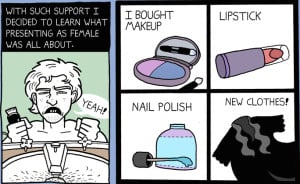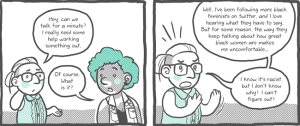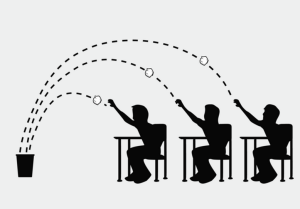
Source: DIY Health
“Would sex crimes be reduced if children obeyed a few don’ts? Don’t play around public toilets. Don’t take candy or rides from strangers. If picked up, mark down the license of the car.” These children’s self-defense suggestions were made by the iconic Lolita of Vladimir Nabokov’s now-classic 1955 novel. Lolita’s suggestions, and the too-real story of the molestation, rape, and abduction of her, shocked Americans of its era. But it posed an important question that is even more relevant today: How do we keep our young people safe from sex criminals and other predators? In part one of this article, we explored the basics of children’s safety from child predators and serious criminals — things for caregivers to study and learn, rules to set, lessons to teach, and considerations to factor in to choosing third-party caregivers. But children’s safety is more complex than “a few don’ts” – because, as we all know, following a simple set of rules doesn’t prevent a person from experiencing violence. Here, in part two, we look those aspects of protecting children that are slightly beyond the basics: the more subtle, on-going interactions that strengthen our children from the inside, influence their decision making, impact their safety, and, hopefully, contribute to a safer and saner society.
1. Modeling
When we are in the presence of a child, like it or not, we’re modeling behavior. Where matters of self-defense and safety are concerned, adults can model helpful behaviors or unhelpful ones. Assertiveness in verbal communication and body language are very important aspects of self-care and self-protection. We teach it (or its two opposites, aggression and passivity) to children, in part, by our own actions. We can model how to carry ourselves in a manner that communicates confidence and strength over vulnerability and weakness. We can practice asking for what we want and need in the presence of children, practice setting and respecting boundaries unapologetically. Assertive boundary setting — like “no,” “stop,” and “don’t touch me” — is key in violence prevention and self-defense. But what about people who find assertiveness challenging? If you think you may not project confidence, consider this practical advice: “Keep your head up, look ahead, and drop your shoulders…. Walk with a relaxed step,” Defending Ourselves author Rosalind Wiseman suggests. Your confidence may make an impression on the young people in your care. Just like we can model confidence and asking for what we want and need with confidence and clarity, we can also send messages about the rights a child has to her body by the behaviors we require of her. For instance, telling children to “kiss aunty goodbye” is one thing, but making a child kiss aunty, if she or he doesn’t want to, reinforces the notion that kids’ bodies are not theirs. Never force affection on a child or require that a child be affectionate with another adult or child. And listen to how children feel about the touch they encounter from others. If you keep the lines of communication open as children grow, children can report to you — a trusted adult — anything that causes concern in their lives. And being a trusted adult means respecting children’s autonomy with their bodies.
2. Supporting
Supporting children who have been or appear to have been hurt by grown-ups or other children may take many forms, like offering a listening ear or seeking help for them among professionals or other trusted adults in their world. In our everyday encounters with young people whose abuse histories and survivor statuses are unknown to us, we can support them by choosing our own words carefully. Victim-blaming language, like “she shouldn’t have been out that late anyway!” or “Well what was she doing drinking? She’s underage!” communicates to survivors and non-survivors alike that somehow someone other than an assailant is to blame for assault. Assault, abuse, and abduction are never a child’s fault, no matter what he or she may or may not have done. Young people may benefit far more from real-life stories of resilient survivors than criticisms of victims. As they grow old enough to grapple with the problems of a dangerous world, we can expose young people to the recovery and resilience of famous survivors with well-known stories, like Oprah Winfrey, Maya Angelou, and Tyler Perry. Survivors Dylan Farrow, Michelle Knight, and Elizabeth Smart tell more contemporary and incredible stories of living through the worst to rise above it in the end. Young people exposed to these stories are likely to come to understand that people can be strengthened by the very same things that are intended to reduce and destroy them.
3. Exposure
Youth is a time for exploring interests and for getting involved in activities. As you offer your input in the choices your young loved ones are making, consider exposing the children you love to the world of self-defense. What’s in your area? Is there a KIDPOWER program or access to Child Lures Prevention? What are children learning in your local martial arts schools, and how are they being respected? If you’re unsure of how to start looking, Irene Van der Zande devotes and entire appendix of The KIDPOWER Book for Caring Adults to helping adults find a good program. If you’re not in the market for classes but would like a young person in your life to learn some self-defense, The Safe Zone by Donna Chaiet, Francine Russell, and Lillian Gee can provide an inexpensive, kid-friendly take-home resource aimed at teaching children basic techniques and strategies. You can also use the Internet to expose kids to real-life success stories of kids fighting back! Do the young people in your life know about seven-year-old Brittany Baxter and ten-year-old Jacob Soliz-Amaya? They fought off full-grown, real-life assailants. You can also make the best of teachable moments — those real-life situations that pop up and give us the opportunity to illustrate or further reinforce what we want kids to know and do about their own safety—that arise all the time. If a discussion arises about, for instance, the hundreds of girls recently abducted from the school in Nigeria, you could call a child’s attention to the survival strategies—running, hiding, and telling a trustworthy adult—employed by the girls who escaped.
4. Monitoring
It’s important that we watch children in our care with care…even though we’re busy, even as we’re fostering independence, even as they’re yearning for independence. Violence prevention expert Gavin DeBecker says it most clearly: “Until a child is old enough to understand what predatory strategies look like, old enough and confident enough to resist them, assertive enough to seek help, powerful enough to enforce the word No—until all that happens, a child is too young to be his [or her] own protector.” Until they can discern between safe practices and risky ones, between empowering images and degrading ones, they may be too young to access Internet and television too. The Internet exposes children to the world and exposes the world to children. Television provides a variety of images, many of which are steeped in the disempowering traditions of patriarchy and misogyny. Television crime shows and Hollywood movies prolifically peddle the rape and abduction of girls and young women, often depicting victims provocatively splayed out in defeat or helplessly bound before the audience. Real-crime TV shows and network news reports cover high-profile rapes and abductions sensationally, offering little by way of empowerment or useful information in prevention and recovery. Whatever they are exposed to, young people will benefit from and grow in their critical assessment of media if we guide them through the images they see and the stories they hear. Be partners with teens and children in media viewing. Even young children’s shows send mixed messages about safety and danger. As you view children’s shows together, keep in mind that real-life predators don’t often resemble the villains on kids’ shows. These predator images may undermine notions of safety and danger, according to Child Lures author Ken Wooden. Child predators frequently function less like cartoon villains and more like Venus fly traps or angler fish — drawing unsuspecting prey close to them with appealing lures. Thus it’s especially important to monitor Internet use as children grow, as many child predators are luring children out of safety via the Internet. In her book Cyber-Safe Kids, Cyber Saavy Teens, Nancy Willard asserts that computers should be in central locations in the home and should only be used with close, adult supervision. Eventually, as children demonstrate good decision making in restricted web environments and under supervision, they can earn from you more freedom and independence. But whatever rules you set for your children, don’t just assume that they will follow them in your absence. Kenneth Wooden has demonstrated repeatedly that he can lure children taught “don’t go off with strangers” away from safe spaces with a simple promise of showing them or needing help finding a puppy. Again, watch children in your care with care, choose caregivers who will do the same, and continue to monitor the caregivers you choose for the children you love. It’s your prerogative to check in on the children you love (even in unscheduled visits) and report any concerns or potential problems immediately. Hopefully with time and proper care, children will learn to monitor their own environment for safety and danger AND monitor that alarm system inside of themselves known as their own intuition. Intuition is, according to Gavin DeBecker, like getting from A-Z without stopping at all the letters in between. It is how we know something without knowing how we know it, and many self-defense experts believe it to be one of our most crucial tools in self- and child-protection. Honor your own intuition, and encourage girls and boys to do the same. If it sounds on behalf of a child in your care, heed it. Children will learn from watching you move about the world in tune to your inner voice; they can be similarly encouraged to listen to the funny feeling in their stomach or to a hunch. But just as they learn your virtues, they will also learn your prejudices. Be mindful of your own stereotypes, especially those about race and ethnicity. The vast majority of assailants are the same race as their victim, and children will pick up on our stereotypes to the contrary, whether those stereotypes are uttered or not.
***
There was nothing about Humbert Humbert — Nabokov’s villain and the true-to-life bane of Lolita — that would’ve signaled many caregivers to the depth of his evil: He was handsome, well mannered, educated, soft-spoken, and proper. However, he was alone, unmonitored with his twelve-year-old victim, he was inappropriate with his boundaries, and he was adept at luring techniques: the blue print for real-life pedophiles. He was criminal, perverse, and rapacious — “a panting maniac” whose story can “warn us of dangerous trends [and] point out potent evils,” whose fictional methods ring true to those familiar with the likes of Ariel Castro, Brian David Mitchell, and Wanda Ileen Barzee. Through the example of real-life victims-turned-survivors, the teachings of self-defense experts, the counsel of our wits, and the support of each other, we can help our girls and boys steer clear of tragedy and abuse. We can lay the groundwork within and around the children we love for good health and truly empowered living. [do_widget id=”text-101″] Sarah T. is a writer, English teacher, martial artist, self-defense instructor, wife, and mother living in Anacostia, Washington, DC. Her collection of poetry and prose, This Past Was Waiting for me When I Came, is scheduled for release this winter. Special thanks for this article goes to Lauren Taylor and to Nabokov scholar Andrea Pitzer. Quotes from Lolita may be found in Lolita in Vladimir Nabokov, Novels: 1955-1962, New York: Knopf, 1996, pp. 154 and 5, respectively.
Search our 3000+ articles!
Read our articles about:
Our online racial justice training
Used by hundreds of universities, non-profits, and businesses.
Click to learn more




















